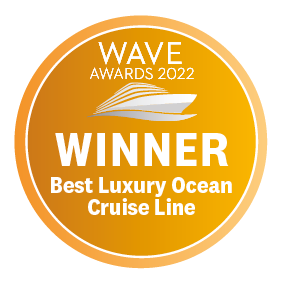Grand Spice Route Quest

Discover the wide variety of inviting spaces and activities on Seven Seas Voyager®. Sip fresh java at Deck 5’s Coffee Connection, run on the open-air track on Deck 12, or head to Serene Spa & Wellness™ spa on Deck 6 for some pampering.
Regent is almost in a class of its own, offering luxury on an incredible scale with original Picassos, an acre of marble and 500 chandeliers aboard Seven Seas Explorer, Seven Seas Splendor and Seven Seas Grandeur.
The most opulent suites in all three - at around £8,000 a night - feature grand pianos, private bars and even their own spas. The signature Compass Rose restaurant is an absolute must-see.

















Spirited Singapore in Southeast Asia is the world’s only sovereign island city-state. The nation’s contemporary identity as a city-island hybrid stems from its colonial history as a British-controlled trading territory, founded by Sir Stamford Raffles in 1819. Today, an amalgamation of multiracial influences give rise to Singapore’s diverse culture - primarily a fusion of Malay, Indian, Chinese and Western traditions. This rich multiculturalism is one of Singapore’s top selling points, drawing in visitors from all over the world who are keen to explore the island’s divergent neighbourhoods, from the colourful pagodas of Chinatown to the ornate temples of Little India. Singapore’s natural landscape is as varied as its culture, with stark contrasts between the luscious, tropical Singapore Botanic Garden and the perfectly sculpted, futuristic “Supertrees” of Gardens by the Bay. A quirky mishmash of old and new, Singapore is without a doubt one of Asia’s most unique and memorable islands with which travellers cannot help but fall in love along a Singapore cruise.








Spirited Singapore in Southeast Asia is the world’s only sovereign island city-state. The nation’s contemporary identity as a city-island hybrid stems from its colonial history as a British-controlled trading territory, founded by Sir Stamford Raffles in 1819. Today, an amalgamation of multiracial influences give rise to Singapore’s diverse culture - primarily a fusion of Malay, Indian, Chinese and Western traditions. This rich multiculturalism is one of Singapore’s top selling points, drawing in visitors from all over the world who are keen to explore the island’s divergent neighbourhoods, from the colourful pagodas of Chinatown to the ornate temples of Little India. Singapore’s natural landscape is as varied as its culture, with stark contrasts between the luscious, tropical Singapore Botanic Garden and the perfectly sculpted, futuristic “Supertrees” of Gardens by the Bay. A quirky mishmash of old and new, Singapore is without a doubt one of Asia’s most unique and memorable islands with which travellers cannot help but fall in love along a Singapore cruise.




The largest port city and capital of Sri Lanka, Colombo is situated on Kelani River's southwestern shores. As well as being a major commercial city, being one of Asia’s industrial and financial hubs, Colombo also has a wealth of cultural attractions that make it the perfect port of call on a Far East or Asia cruise, from numerous churches and monuments to restaurants and shopping malls – offering the perfect blend of history and modernity.






















Discover the wide variety of inviting spaces and activities on Seven Seas Voyager®. Sip fresh java at Deck 5’s Coffee Connection, run on the open-air track on Deck 12, or head to Serene Spa & Wellness™ spa on Deck 6 for some pampering.

